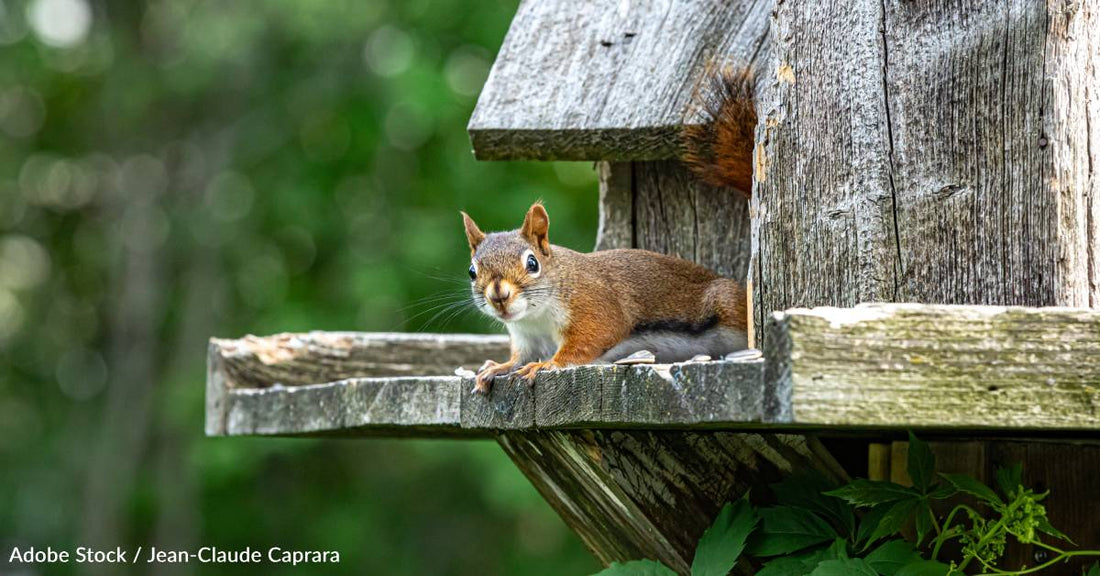10 Reasons We Should All Appreciate Squirrels
Michelle Milliken
Squirrels, nature’s snack hoarders, share space with us on a regular basis. They may sometimes fade into the background because of how often we see them, but these common critters are actually quite unique. They also help shape the environment. Their contributions are celebrated each year on January 21 – National Squirrel Appreciation Day. Read on to learn 10 reasons we should appreciate these busy rodents!
There Are Quite a Few Different Squirrels

Squirrels are a diverse bunch with a foothold on every continent but Antarctica. They’re even found in Australia, though they’re not native to that landscape. In all, there are nearly 300 species. This includes chipmunks, prairie dogs, groundhogs, and marmots! The largest – the Indian giant squirrel – can measure up to three feet from tip to tip. The smallest – the pygmy squirrel – measures in at just about five inches.
They Have Good Memories
There’s the old saying that an elephant never forgets, but a squirrel may not, either. Research has shown that these ubiquitous rodents have impressive memories. As an example, a 2017 study published in the journal Animal Cognition found that gray squirrels were able to remember how to solve puzzles nearly two years after they’d last encountered them.
They’re Committed and Organized Snackers

Another sign of squirrels’ fine-tuned brains is that they’ve built their own snacking systems! A 2017 study conducted by researchers at UC Berkeley showed that when squirrels store their nuts, which can number up to 10,000 per year, they sometimes organize them in groups of the same nut. The researchers say this is a sign of chunking, a cognitive process that involves breaking down a large group of items into smaller, organized ones.
Lucia Jacobs, the study’s senior author and UC Berkeley psychology professor, explains, “Squirrels may use chunking the same way you put away your groceries. You might put fruit on one shelf and vegetables on another. Then, when you’re looking for an onion, you only have to look in one place, not every shelf in the kitchen.”
The Squirrel Menu Doesn’t Just Include Nuts
Though we mostly associate squirrels with nuts, there’s a lot more on the squirrel menu. They also eat flowers, berries, other fruit, grains, fungi, eggs, insect larvae, and even baby birds, if given the chance.
They Have Personalities

Considering the entertainment squirrels can provide – you have probably seen them appearing to taunt dogs – it may not be surprising that science has found they also have their own unique personalities. A study published in the journal Ecology Letters found that mother squirrels differed in their tendency to explore, or be aggressive, careful, or active. In years with abundant food, the active mothers may provide a survival advantage to their young, while it could be a downside in leaner years, when passive mothers do better.
A 2021 UC Davis study on golden-mantled ground squirrels also showed that squirrels have different levels of boldness, sociability, aggressiveness, and activity. This study found that social squirrels’ personalities could save their lives, while bolder and aggressive squirrels with higher activity levels tended to get the best perches, another advantage.
They’re Very Chatty
Social squirrels may have more associates with whom they can “speak”, and these animals do a lot of speaking. They have vocalizations like barks, squeaks, screeches, and chirps. These can let others know about threats or other concerns. They’re also good with silent communication – making soundless use of their tails to send messages.
Snakes Aren’t Scary to Them

California ground squirrels are kind of the bad boys of their neighborhoods. They can get into tussles with rattlesnakes and escape completely unscathed. That’s because they can neutralize rattlesnake venom! Babies need to be careful, though, as their smaller bodies can’t quite manage to fend off all that venom, so they can sometimes fall victim to snakes.
Their Winter Snoozes Could Help Astronauts
Squirrels can live life on the edge with rattlesnakes, or they can become homebodies and sleep for most of the year. Arctic ground squirrels spend eight to nine months hibernating, and, during that time, their body temperatures can dip to 27 degrees Fahrenheit. Their usual temperature? That would be 99 degrees. This impressive biological feat is something NASA says may one day help with long space missions.
According to NASA, learning how the squirrels’ hibernation works could help with medically induced hibernation, protecting astronauts from cabin fever, and preventing muscle and bone loss in zero gravity.
They’re Gardeners

Though the astronaut assistance may be well into the future, squirrels are helping us right now. When they stash seeds for later, they don’t always end up coming back for them, which means they’re essentially little tree planters. With their snack stocking ways, they shape our forests! They also spread mushrooms through their scat.
They Face Dangers
Like most wildlife species, squirrels are facing the real threat of habitat loss and degradation. Wildfires of increasing severity are only making things worse. Encounters with humans, including their vehicles, can also be deadly. In situations like that, babies are often left without their mothers. If they’re lucky, a rescue may be able to save their lives, but that requires a lot of formula. If you’d like to help provide life-saving formula for orphaned wildlife, including baby squirrels, click below!

